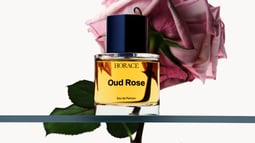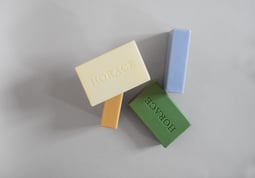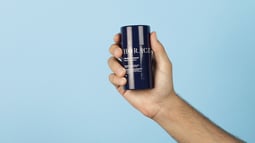

A Fragrance Glossary You Can Actually Understand
Photos Rachelle Simoneau
Words Matthieu Morge-Zucconi
Share the article on
Fragrance has its own world of terms, so specific, it can be hard to grasp. Here we’ve created a full glossary, so you can understand everything about fragrances. Save it on your laptop or phone. Feel like a fragrance at your next dinner.
Absolute: A concentrated oily raw material obtained from an extraction with volatile solvents or with enfleurage.
Accord: A blend of at least 2 materials to create a new scent. It can be all-natural, all-synthetic, or a combination. Often used to replace banned or expensive ingredients or enhance natural properties, such as giving more sillage to sandalwood.
Animalic: Olfactory family which smells like…… animal scents, yes! It also relates to scents which smell like skin. Musk, civet, and castoreum are now made synthetically.
Aromatic: An olfactory family composed of “aromates” which is French is what is called the herbs like sage, lavender, thyme, rosemary, and basil.
Base: Notes on which a perfumer regularly builds his composition. For example, Fougère is a base made of lemon, lavender, geranium, and coumarin notes.
Top notes: First olfactory impression left by a perfume. The notes you smell as soon as you apply your fragrance, and which last for a limited time: from a few minutes to one hour.
Heart Notes: also called Core Notes and Middle Notes are the main notes of your fragrance. They come after the top notes and last for 4 to 5 hours in general.
Base notes: Notes that linger and last the longest. They will last as long as the fragrance stays on your skin or clothes. It means you better love them because you’re gonna live with them.
Chypre: Olfactory family which is also a base made of citrus top notes, labdanum, rose and patchouli at heart and oakmoss. Its name comes from the perfume Chypre created by René Coty in 1917.
Citrus: Olfactory family, which includes fragrances made of citrus: lemon, bergamot, orange, grapefruit, mandarin, you name it. It can also be named Hesperidic, like the Garden of Hesperides of Hercules.
CO2 Extraction: Carbon dioxide is used to extract fragrance at low temperatures, preserving the scent.
Cold Pressing: Used for citrus fruits; oils are pressed out of the peels.
Concrete: A waxy mass obtained by solvent extraction, often used in the production of absolute. It’s made from plant materials, usually flowers.
Distillation: Steam passes through plant materials to collect essential oils.
Molecular distillation: A distillation technique to obtain very pure raw materials, free from undesired facets.
Eau Fraîche: Fragrance with a 2% to 5% fragrance concentration in alcohol and water. Eau de Cologne was invented by Giovanni Paolo Feminis in the 18th century, when he was living in Cologne (yes as simple as that). The original fragrance was made with bergamot, lemon and orange blossom.
Eau de Cologne: Fragrance with a 2% to 5% fragrance concentration in alcohol and water. Eau de Cologne was invented by Giovanni Paolo Feminis in the 18th century, when he was living in Cologne (yes as simple as that). The original fragrance was made with bergamot, lemon and orange blossom.
Eau de Toilette: Fragrance with a 5% to 15% fragrance concentration in alcohol and water.
Eau de Parfum: Fragrance with a 15% to 20% fragrance concentration in alcohol and water.
Parfum: Fragrance with over 20% fragrance concentration in alcohol and water. Can also be called Extract or Extrait de Parfum.
Essence: A highly concentrated form of a fragrance compound. Essential oils are an essence, but not all essence are essential oils.
Essential oil: A type of extracted ingredient obtained from distillation.
Extraction: This is how notes are obtained from natural ingredients. It can be distillation, cold pressing, solvent extraction, CO2 extraction, or maceration. When the same plant is extracted in 2 different manners, the obtained scent is different i.e. a rose absolute smells different than a rose essential oil.
Floral: Olfactory family that is all about (drumrolls) flowers.
Fougère: Olfactory family in which fragrances revolve around lemon, lavender, geranium, and coumarin notes. It takes its name from Fougère Royale created by Houbigant in 1882, a fav of Guy de Maupassant, which went on to be one of the main inspirations for men’s fragrance.
Leather: Olfactory family of (you name it) leather scents: warm, rich, sometimes smoky. Much like when you smell suede, tanned leather. It can have animalic notes.
Maceration: Time required for a fragrance (perfume concentrated mixed in alcohol and water) to stabilize and realize its full potential from an olfactive standpoint. The best maceration is done in large batches. You can also macerate your own fragrance at home. Spray a little bit and then let it macerate for at least a month.
Maturation: Time required for a perfume concentrate to age or reach its full potential from an olfactive standpoint. This step takes place before Maceration.
Natural notes: A natural note comes from a natural raw material. Simple. Most perfumes used both natural and synthetic notes.
Olfactory family: Categories in which perfumes are classified. There are generally 7 different families: citrus, woody, leather, floral, fougère, chypre, and oriental (aka amber). There are other families out there: gourmand, green, fruity, spicy, musky, aldehyde, animalic and marine.
Oriental (aka Amber): Fragrance family with soft, powdery, full-bodied, and amber notes. Guerlain's Shalimar is an excellent example of an oriental scent if that helps. Today it’s called Amber to avoid colonial references.
Perfumer: Also named Nose, it’s the person who actually creates the fragrance.
Projection: How far a perfume radiates around you.
Sillage: Also known as trail, it’s the olfactory impression left in the air when a person wearing perfume walks by. In other words, the scent trail ensures any (lucky) person who crosses your path knows you smell very good. Sillage is a type of projection.
Solvent extraction: Solvents dissolve plant materials to get the fragrance, creating absolute.
Synthetic notes: These notes are created in a lab.
Woody: Olfactory family of the woods scent. Easy one. So sandalwood, cedar, patchouli, or vetiver notes, you name it.



